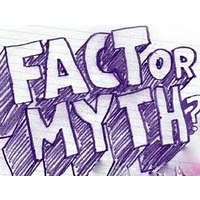California Has More Official Independent Voters that Aren't Actually Independent

Voter registration in California has changed, but does it really make any difference in the voting booth?
Secretary of State Debra Bowen published data (pdf) this month that shows a decline in voters who identify themselves as Republicans from 30.8% in 2010 to 28.6% now. Democrats also declined from 44.6% to 43.5%.
The number of Independents increased from 20.1% to 21.06% but the big winner was “Other,” which jumped from 4.5% to 6.9%.
Party affiliation in the state has declined dramatically since 1998, when 46.8% said they were Democrats and 35.9% called themselves Republicans. “Other” political parties claimed allegiance from 5.1% of voters. The big change has been in those who claim to have “No Party Preference.” In 1998, only 12.2% of voters said they were independent.
As the November midterm elections draw near, the conventional wisdom assumes that voters rarely stray from their party affiliations, but that independents are fair game. Considering that most elections are decided by single-digit margins, it stands to reason that those 21.6% of voters who venture forth without party allegiance are the key to victory.
That is almost certainly not the case.
They aren't independent, they have a preference and they don't swing back and forth from election to election, according to studies of voting behavior.
This isn't new information. The seminal text on the subject, “The Myth of the Independent Voter,” was published in 1992. It calls those claiming no party preference are “largely closet Democrats and Republicans” and maintains that there is a clear correlation between the voting record of an “independent” and which way he admits to leaning.
There are a lot of leaners. When applied to the national electorate, only about 10% of voters are really considered independent. That would fit nicely with the California data from 1998, but not so much with today's modern electorate that apparently struggles to know its own mind.
A CNN survey in 2010 found that 54% of Tea Party members considered themselves independents, but 88% of them vote or “lean” Republican.
However, there is question among some political analysts about whether that 10% figure is relevant.
Kevin Drum at Mother Jones, who occasionally writes about independent-voter mythology, gave a shout out Tuesday to Lynne Vavreck for a piece in the New York Times analyzing the 2010 midterm elections nationally. She found that around 6% of voters who punched a chad for Republican Senator John McCain as president in 2008 voted for a Democrat in their local House of Representatives race in 2010. The same switch was evidenced by those who had voted for President Obama in 2008.
The two groups of voters, who qualify as independents by virtue of their flip-flopping, essentially cancelled each other out. That leaves a very small group of migrant voters. The Republican sweep in 2010, which many analysts had credited to a swing right by independents, was more correctly explained by much better turnout of the party faithful, whether they proclaim their faith publicly or not.
–Ken Broder
To Learn More:
California Voters: More Independents, Fewer Republicans (KPCC)
Most Independent Voters Aren't, Really (by Kevin Drum, Mother Jones)
The Myth of Swing Voters in Midterm Elections (by Lynn Vavreck, New York Times)
Republican Candidate Looks for that Elusive Independent Sweet Spot (by Ken Broder, AllGov California)
60-Day Report of Registration (California Secretary of State) (pdf)
- Top Stories
- Controversies
- Where is the Money Going?
- California and the Nation
- Appointments and Resignations
- Unusual News
- Latest News
- California Forbids U.S. Immigration Agents from Pretending to be Police
- California Lawmakers Urged to Strip “Self-Dealing” Tax Board of Its Duties
- Big Oil’s Grip on California
- Santa Cruz Police See Homeland Security Betrayal in Use of Gang Roundup as Cover for Immigration Raid
- Oil Companies Face Deadline to Stop Polluting California Groundwater





